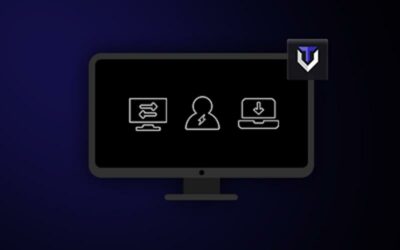It is no secret that hacking has become a severe problem in recent years. With the advent of the Internet, hackers have gained access to sensitive information and wreak havoc on individuals and businesses.
Fortunately, there are several steps you can take to protect yourself from hackers. Here are five of the most important.
1) USE STRONG PASSWORDS & SECONDARY AUTHENTICATION
One way to protect yourself from hackers is to use strong passwords, secondary authentication like a text message or biometrics, and good password management.
Password standards have changed over the years, it’s no longer enough to mix around a few letters with numbers and symbols. Strong passwords should be very long (at least 16 characters), unique, random, and nonsensical. Check out our guide on creating secure passwords for more.
No normal person can memorize 50 long and completely random passwords! That’s why using password manager software is essential in modern times. They can generate secure, random passwords for all your accounts, store them, and allow you to log in quickly from any device.
Some form of secondary authentication is also a must. The easiest way is often through biometrics, for example scanning your fingerprint on your phone. You may choose to have a code sent to your phone or email. There are also apps like Duo Mobile or Google Authenticator that store constantly changing secondary login codes for each of your accounts. While taking a few extra seconds to verify your identity can seem like a hassle, it’s much easier than dealing with stolen data or financial information.
2) USE ENCRYPTION
What is SSL? SSL (Secure Sockets Layer) is a protocol that helps keep your information safe when using the internet. SSL encrypts the data sent between your device and the website you visit.
Even if someone were to intercept the data, they would not be able to read it. By encrypting data, sites can help protect their users’ information from being accessed by hackers.
3) USE A FIREWALL
A firewall is a critical piece of security software for any computer system. It helps to protect your system from malicious traffic by blocking incoming connections from known or suspected hackers. In addition, a firewall can also help to prevent legitimate traffic from accessing your system if it is suspected of carrying malware or other threats.
If you are unsure whether your system has a firewall, you can check with your IT department or service provider. They will be able to provide you with the information you need to ensure that your system is adequately protected.
4) BE CAUTIOUS OF EMAIL ATTACHMENTS
It is important to be cautious of email attachments, even if they come from a trusted source. You can do a few things to protect yourself from email threats.
First, never open email attachments or click links in emails from unknown senders. Even if you do know the sender, exercise caution – if a link or attachment looks suspicious, it probably is. If you weren’t expecting to receive anything, check with the sender through another method before opening email attachments or clicking links.
Second, make sure your computer has up-to-date antivirus and anti-malware software installed.
Finally, keep your operating system and all software programs up to date with the latest security patches.
5) KEEP YOUR SOFTWARE UP TO DATE
One of the most common ways hackers gain access to systems is by exploiting vulnerabilities in outdated software. Keeping your software updated can help close these security holes and make it more difficult for hackers to access your system.
When software developers create new versions of their products, they often include fixes for known security vulnerabilities. This means that if you have an older version of the software, it may be less secure than newer versions. Updating to the latest version can help protect your system from these attacks.
Sometimes, updating a program’s latest version can close a significant security hole. In other cases, you may need to install a patch or service pack to get the necessary fixes. Keeping your software up-to-date is essential for protecting your system from attack.
By taking these simple steps, you can help protect yourself and your business from the threat of hackers. While no security measure is 100% foolproof, following these guidelines can help reduce your risk of becoming a hack attack victim.



